Bane Vasic, Erozan M. Kurtas0849315247, 9780849315244
Table of contents :
CODING AND SIGNAL PROCESSING FOR MAGNETIC RECORDING SYSTEMS……Page 1
Preface……Page 5
Contributor Listing……Page 10
Section II: Communication and Information Theory of Magnetic Recording Channels……Page 13
Section IV: Coding for Read Channels……Page 14
Section VI: Iterative Decoding……Page 15
Section I Recording Systems……Page 17
Table of Contents……Page 0
1.2 The Early Days of Magnetic Recording……Page 18
1.3 Tape Drives……Page 22
1.4 Disk Drives……Page 26
1.5 Acknowledgements……Page 32
2.1 Introduction……Page 34
2.2 Transition Parameter of an Isolated Transition……Page 36
2.3 Playback Signal from the Reciprocity Principle……Page 40
2.3.1 Playback Signal of an Isolated Magnetization Transition……Page 41
2.3.2 Playback Signal of a Square-wave Magnetization Pattern……Page 44
2.4 Playback Media Noise Spectra……Page 46
2.4.1.1 DC Remanent Noise Spectrum……Page 47
2.4.1.2 Transition Noise Spectrum……Page 49
2.5.1 SNR of the Square-wave Pattern……Page 50
2.5.2 SNR of the PRBS……Page 52
2.6 Nonlinear Transition Shift……Page 54
2.7 Summary……Page 55
References……Page 56
3.1 Introduction……Page 60
3.2.2.1 GeSbTe and AgInSbTe Phase Change……Page 62
3.2.2.4 Media Noise Sources……Page 64
3.2.3 Magneto-Optic Media……Page 65
3.2.3.1 RE-TM Alloys……Page 66
3.2.4 Dielectrics……Page 68
3.2.5 Heat Sink/Reflector……Page 69
3.2.6.1 Optical Figure of Merit……Page 70
3.2.7.1 Optical Properties: Transparency, Birefringence, Roughness……Page 71
3.2.7.4 Formatting……Page 72
3.2.9.1 AgOx or PtOx and Sb or Te……Page 73
3.3.1 Light Source……Page 74
3.3.2 Beamsplitter and Waveplate……Page 75
3.3.4 Focus and Tracking Servo……Page 76
3.3.6 Noise……Page 77
Acknowledgments……Page 78
References……Page 79
4.2 History of Magnetic Recording Transducers……Page 82
4.3 Air Bearings and Head to Media Spacing……Page 85
4.4 Write Heads……Page 87
4.5 Longitudinal Write Heads……Page 88
4.6 Perpendicular Heads……Page 89
4.7 CIP Spin Valve Sensors……Page 91
4.8 CPP Sensor Designs……Page 94
4.9 The Future of Read/Write Heads……Page 96
References……Page 97
Section II Communication and Information Theory of Magnetic Recording Channels……Page 99
5.2 Basic Communication Channel Model for Magnetic Storage……Page 101
5.3 Signal-Dependent Medium Noise……Page 104
5.4 SNR Definition in Signal-Dependent Noise……Page 105
5.5 Nonlinearity Characterization……Page 108
5.7 Applications……Page 109
6.1 Introduction……Page 111
6.2.1 Communications Channel Analogy……Page 114
6.2.2 Generation of the Noisy Readback Signal for a given……Page 116
6.2.3 Numerical Examples……Page 118
6.3 Simulating the Recording Channel with Electronics and Transition Noise……Page 119
6.3.3 Remarks on Direct Approach……Page 120
6.3.4 The Indirect Approach……Page 123
6.3.5 Simulation Methods……Page 126
6.3.6 Numerical Examples……Page 128
6.3.7 Remarks on the Indirect Approach……Page 129
References……Page 130
7.1 Introduction……Page 131
7.2 Signals……Page 132
7.3.1 Time Average (mean time value)……Page 133
7.3.2 Statistical Average……Page 134
7.4.1 Time Average Autocorrelation……Page 135
7.4.3 Phase Randomising……Page 137
7.5 Power Density Spectrum of Digital Signals……Page 138
Example 7.1……Page 139
Example 7.2……Page 140
Example 7.3……Page 143
Appendix: A Short Overview of Markov Chains Terminology……Page 144
References……Page 145
8.1 Introduction……Page 146
8.2 Characterization of Intersymbol Interference in Digital Communication Systems……Page 148
8.3 Partial Response Signals……Page 151
8.4 Detection of Partial Response Signals……Page 154
8.5 Model of a Digital Magnetic Recording System……Page 155
8.6 Optimum Detection for the AWGN Channel……Page 158
8.7 Linear Equalizer and Partial Response Targets……Page 162
8.8 Maximum-Likelihood Sequence Detection and Symbol- by- Symbol Detection……Page 163
8.8.2 Maximum-Likelihood Sequence Detector……Page 164
8.9 Performance Results from Computer Simulation……Page 165
8.10 Concluding Remarks……Page 166
References……Page 167
9.1 Introduction……Page 169
9.2 Linear Codes……Page 171
9.3 Syndrome Decoding, Hamming Codes, and Capacity of the Channel……Page 174
9.4 Codes over Bytes and Finite Fields……Page 176
9.5 Cyclic Codes……Page 178
9.6 Reed Solomon Codes……Page 179
9.7 Decoding of RS codes: the key equation……Page 181
9.8 Decoding RS Codes with Euclid’s Algorithm……Page 184
9.9 Applications: Burst and Random Error Correction……Page 186
References……Page 189
10.1 Introduction……Page 190
10.2 Iterative Decoding on Binary Erasure Channel……Page 191
10.3 Iterative Decoding Schemes for LDPC Codes……Page 196
10.3.1 Gallager’s Probabilistic Iterative Decoding Scheme……Page 197
10.3.1.1 Min-Sign Approximation……Page 200
10.3.2 Message-Passing Algorithm for Soft-Decision Iterative Decoding……Page 202
10.4 General Message-Passing Algorithm……Page 203
10.4.1 Computation of a Marginal Function……Page 204
References……Page 206
11.1 Introduction……Page 208
11.2 Constrained Systems and Codes……Page 209
11.3.1 Requirements……Page 211
11.3.2 Definitions……Page 212
11.4 Channels with Colored Noise and Intertrack Interference……Page 213
Proposition 11.1……Page 214
Proposition 11.3……Page 215
11.6.2 Reversed Concatenation……Page 216
References……Page 217
Information Theory of Magnetic Recording Channels……Page 219
12.1 Introduction……Page 220
12.2 Channel Capacity and Information Rates for Magnetic Recording Channels……Page 221
12.2.1 Capacity of ISI Channels with AWGN……Page 222
12.2.2 Achievable Information Rates for ISI Channels with AWGN……Page 223
12.2.2.1 Bounds on Achievable Information Rates……Page 224
12.2.2.2 Estimation of Achievable Information Rates……Page 226
12.2.2.3 Information Rates with Correlated Inputs……Page 228
12.3.1 Media Noise Model……Page 230
12.3.2 Estimation of Achievable Information Rates……Page 232
References……Page 236
13.1 Introduction……Page 239
13.2 Channel Model……Page 240
13.3 Information Rate and Channel Capacity……Page 241
Definition 13.2 (Joint source/channel state and memory length)……Page 242
13.4.2 Reformulating the Expression of the Mutual Information Rate……Page 243
Algorithm 13.2……Page 244
Definition 13.5(Maximal information rate for a Markov source)……Page 245
13.5.1 Reformulating the Expression of the Mutual Information Rate……Page 246
Algorithm 13.3……Page 247
Algorithm 13.4……Page 248
13.6.1 Markov Sources Achieve the Feedback Capacity……Page 249
13.6.2 A Stochastic Control Formulation for Feedback Capacity Computation……Page 250
Algorithm 13.5……Page 251
13.6.4 Delayed Feedback Capacity Computation……Page 252
13.7 Vontobel-Arnold Upper Bound……Page 253
13.8 Conclusion and Extensions Beyond Partial Response Channels……Page 255
References……Page 256
Section III Introduction to Read Channels……Page 258
14.1 Magnetic Recording Basics……Page 259
14.2 Physical Organization of Data on Disk……Page 264
14.3 Logical Organization of Data on a Disk……Page 265
14.5 Physical Limits on Recording Density……Page 266
14.6 Future……Page 267
Read Channels for Hard Drives……Page 269
15.2 Partial Response Signaling with Maximum Likelihood Sequence Estimation……Page 271
15.4 Viterbi Detection……Page 272
15.5 Timing Recovery……Page 273
15.6 Read Channel Servo Information Detection……Page 274
15.9 Postprocessor……Page 275
15.10 Modulation Coding……Page 276
15.12 Error Performance Measures……Page 277
References……Page 278
16.1.1 Hard Drive Component Overview……Page 280
16.1.2 Role of the Controller……Page 282
16.1.3 A Historical Perspective……Page 283
16.2.2.1 Data Sector Format Fields……Page 285
16.2.2.2 Servo Spoke Format Fields……Page 286
16.2.2.5 Spoke Sync Detection: the Master Timing Reference……Page 287
16.2.2.6 Servo Spoke Read Sequence……Page 288
16.2.2.7 Timing Data Sector R/W Operations……Page 290
16.2.2.8 Data Sector Read/Write Sequences……Page 291
16.2.2.9 Read/Write Fault Checking……Page 293
16.2.2.10 Sync Detection Windowing……Page 294
16.2.3.2 ECC Decoding and Data Correction……Page 295
16.2.4 Host Interface Subsystem……Page 298
16.2.5 The Processor Subsystem……Page 299
16.2.6 Buffer Memory Subsystem……Page 300
16.3.1 Data Integrity Strategies……Page 303
References……Page 305
Section IV Coding for Read Channels……Page 307
17.1 Introduction……Page 309
17.2 Asymptotic Information Rate……Page 310
17.3 Other Constraints……Page 312
17.4 Codes for the Noiseless Channel……Page 314
18.1 Introduction……Page 319
18.2 Error Event Characterization……Page 320
18.3 Maximum Transition Run Codes……Page 322
18.4 Detector Design for MTR Constraints……Page 328
18.5 Simulation Results……Page 329
18.6 Summary……Page 330
References……Page 331
19.1 Introduction……Page 332
19.3.1 Introduction……Page 333
19.3.2 Dc-free Constraint Sequences……Page 334
19.3.3 Capacity of dc-free Constraint……Page 335
19.3.4 Spectral Characteristics of dc-free Constraint……Page 336
19.3.5 Encoding and Decoding of dc-free Constraints……Page 338
19.4.1 Introduction……Page 340
19.4.2 Sequences with Higher Order Zeros at……Page 341
19.4.3 K- RDSf Sequences……Page 342
Sequences on Partial Response Channels……Page 345
19.5 Composite Constrained and Combined Encoding……Page 346
References……Page 349
20.1 Introduction……Page 352
20.2 Bounds……Page 353
20.3 Example: A Trellis Code Construction……Page 355
20.4.3 Block and Trellis Code Constructions……Page 358
20.4.4 Combined Codes Directly Derived from Linear Error Correcting Codes……Page 359
20.4.8 Multilevel Constructions……Page 360
20.4.11 Maximum Likelihood Decoding of Standard Constrained Codes……Page 361
20.5 Post Combined Coding System Architectures……Page 362
References……Page 363
21.1 Introduction……Page 369
21.2.1 Definitions……Page 370
21.2.2 Standard Concatenation……Page 371
21.2.3 Reverse Concatenation……Page 372
21.2.5 Lossless Compression……Page 374
21.3 Reverse Concatenation and Soft Iterative Decoding……Page 376
References……Page 377
22.1 Introduction……Page 379
22.2 Encoding System Description and Preliminaries……Page 380
22.3 Trellis Codes for Partial-Response Channels Based Upon the Hamming Metric……Page 382
22.4 Trellis-Matched Codes for Partial-Response Channels……Page 385
22.5.1 Cosets of Convolutional Codes……Page 388
Example 22.5……Page 389
22.5.1.1 Bit Stuffing……Page 390
22.6 Avoiding Flawed Codewords……Page 391
Appendix A……Page 393
References……Page 395
23.1 Introduction……Page 397
23.2.1 The Channel Model……Page 398
23.2.3 Trellis Representations……Page 399
23.2.4 The Markov Channel Capacity……Page 400
23.3 Trellis Codes, Superchannels and Their Information Rates……Page 402
23.1……Page 404
23.4.1 Choosing the Extended Channel Trellis and the Superchannel Code Rate……Page 405
23.4.2 Choosing the Number of States in the Superchannel……Page 406
23.4.4 Choosing the Branch Connections……Page 407
23.5.1 Encoding/Decoding System……Page 409
23.5.4.1 Outer Code Optimization……Page 411
23.6.1 Dicode Channel……Page 412
23.6.2 A Channel without Spectral Nulls……Page 414
Acknowledgment……Page 415
References……Page 416
24.1 Introduction……Page 418
24.3 Multitrack Channel Model……Page 419
24.4.1 ITI Reducing Codes for PR Channels……Page 420
24.4.3 Low-Complexity Encoder and Decoder Implementations……Page 421
24.5 Multitrack Soft Error-Event Correcting Scheme……Page 422
References……Page 424
25.1 Introduction……Page 427
25.2 Two-Dimensional Precompensation……Page 429
25.3 Two-Dimensional Equalization……Page 430
25.3.1 Linear Minimum Mean-Square-Error Equalization……Page 431
25.3.2 Partial Response Equalization……Page 432
25.4 Two-Dimensional Quasi-Viterbi Methods……Page 434
25.5 Two-Dimensional Joint Detection and Decoding……Page 439
References……Page 441
Section V Signal Processing for Read Channels……Page 443
26.1 Introduction……Page 445
26.2.1 Symbol Rate VCO versus Interpolative Timing Recovery……Page 446
26.2.2 Timing Loop Modes……Page 447
26.3 Symbol Rate Timing Recovery Schemes……Page 448
26.3.1 MMSE Slope Lookup Table (SLT) Timing Recovery……Page 449
26.3.3 Mueller and Muller (MM) Timing Loop……Page 452
26.4 Performance Analysis of Symbol Rate Timing Loops……Page 453
26.4.2 Noise Jitter Analysis of Timing Loop……Page 454
26.5 Jitter and BER Simulation Results……Page 456
26.6.1 LOLR Detection……Page 458
26.7 Conclusions……Page 459
References……Page 461
27.1 Introduction……Page 462
27.2 Conventional Timing Recovery Architecture……Page 463
27.3.1 Fully Digital Timing Recovery……Page 464
27.3.2 MMSE Interpolation Filter without Channel Knowledge……Page 465
27.3.3 MMSE Interpolation Filter with Channel Knowledge……Page 466
27.4.1 The Estimate of the Initial Sampling Phase……Page 468
27.4.5 FIR-ITR Loop Structure……Page 470
27.5.1 System Model……Page 471
27.5.3 BER Performance……Page 472
27.5.3.1 Longitudinal Recording……Page 473
27.5.3.2 Perpendicular Recording……Page 476
References……Page 477
28.1 Introduction……Page 478
28.2 Equalization Architectures and Strategies……Page 479
28.3 CTF Configurations……Page 480
28.5 Gain Equalization and Other Issues……Page 482
28.6.1 Simulation Environment and Optimization Procedure……Page 483
28.6.2 Results……Page 485
28.7 Actual Equalizer Architectures……Page 488
References……Page 489
29.1 Introduction……Page 491
29.2 Servo Writing……Page 493
29.3 The Digital Field……Page 494
29.3.2 Offtrack Detection……Page 495
29.4 The Burst Field……Page 497
29.4.1 Impairments……Page 498
29.4.2 Formatting Strategies……Page 499
29.4.3 Position Estimators……Page 500
References……Page 501
30.1 Introduction……Page 503
30.2.2 Coding Gain/Rate Tradeoff for Servo……Page 505
30.4.1 Channel Model and Simulation Environment……Page 506
30.4.2 Ontrack Results……Page 507
30.5 Seek Mode Performance……Page 508
30.5.2 Simulation Results……Page 509
30.6.1 Burst Amplitude Calculation……Page 511
30.6.2 Burst Demodulation SNR……Page 512
30.7 Conclusions……Page 513
References……Page 514
31.1 Introduction……Page 515
31.2 Modeling Thermal Asperities……Page 516
31.3.1 System Model……Page 518
31.3.2 System Parameter Settings……Page 519
31.3.3 Simulation Results……Page 520
31.4 TA Detection and Cancelation Techniques……Page 523
References……Page 530
32.1 Introduction……Page 531
32.2 Partial Response Equalization……Page 532
32.3 Decision Feedback Equalization……Page 539
32.4 RAM-Based DFE Detection……Page 540
32.4.1 Detection in a Trellis……Page 541
32.5.1 The Viterbi Algorithm……Page 543
Example 32.1……Page 545
32.6 Noise Predictive Maximum Likelihood Detectors……Page 547
32.7 Postprocessor……Page 549
32.8 Advanced Algorithms and Algorithms Under Investigation……Page 550
32.8.2 Metric—First Algorithms……Page 551
References……Page 552
33.1 Introduction……Page 554
33.2.1 Maximum Likelihood Sequence Detection (MLSD) over ISI Channel……Page 555
33.2.2.1 BCJR Algorithm……Page 558
33.2.2.2 SOVA……Page 559
33.3 Recording System Model……Page 560
33.4.1 Data-dependent Correlated Noise……Page 562
33.4.2 MLSD Based on Pattern-Dependent Noise Prediction……Page 564
33.5 Simulations……Page 566
33.6 Conclusions……Page 568
APPENDIX C: Outlines of the SOVA……Page 569
References……Page 570
34.1 Introduction……Page 571
34.2 Read/Write Channel Architectures……Page 572
34.3 Partial Response Equalization with Maximum- Likelihood Detection……Page 573
34.4 Magnetic Disk Drive Read/Write Channel Integration……Page 574
34.5.1 Variable Gain Amplifier with Automatic Gain Control……Page 575
34.5.2 Continuous-Time Filter……Page 576
34.5.3 Analog-to-Digital Converter……Page 578
34.6.1 FIR Filter Architectures……Page 579
34.6.2 Review of Representative FIR Filters……Page 581
34.7 Viterbi Detector……Page 582
34.7.1 Add-Compare-Select Recursion……Page 583
34.7.3 Metric Normalization in ACS Design……Page 586
34.7.4 Survivor Sequence Detection……Page 587
34.7.5 Data Postprocessing……Page 588
34.8 Future Detection: Iterative Decoders……Page 589
34.8.1 Soft-Output Viterbi Decoder……Page 590
34.8.2 Low-Density Parity-Check Decoders……Page 592
34.9 Timing Recovery……Page 594
34.10 Write Path……Page 597
34.11 Overview of Recently Published Disk-Drive Read/ Write Channels……Page 598
34.12 Challenges of Further Integration……Page 599
References……Page 600
Section VI Iterative Decoding……Page 605
Turbo Codes……Page 606
35.1 Principles of Turbo Coding……Page 607
35.2 Iterative Decoding of Turbo Codes……Page 611
35.3 Performance of Turbo Codes over AWGN Channels……Page 614
35.4 Recording Channels……Page 616
35.5 Turbo Codes for Recording Channels……Page 617
35.6 Performance of Turbo Codes over Recording Channels……Page 620
35.7 Summary……Page 623
36.1 Introduction……Page 627
Example 36.1……Page 628
36.3.2 MacKay Codes……Page 630
36.3.5 RA, IRA, and eIRA Codes……Page 631
36.3.6 Array Codes……Page 632
36.4.1 Overview……Page 633
36.4.2 Probability-Domain SPA Decoder……Page 634
Result……Page 635
36.4.2.1 Summary of the Probability-Domain SPA Decoder……Page 636
36.4.3 Log-Domain SPA Decoder……Page 637
36.4.4 Reduced Complexity Decoders……Page 639
36.2……Page 640
Example 36.2……Page 642
References……Page 643
37.1 Introduction……Page 646
37.2.2 Concatenated SPC Codes……Page 648
37.2.3 Iterative Decoding and Equalization……Page 649
37.3 Analysis of Distance Spectrum……Page 650
37.3.1 Distance Properties of TPC/SPC Coded PR Systems……Page 651
37.3.2 Distance Properties of turbo/SPC Coded PR Systems……Page 653
37.4.2 Problem Formulation……Page 654
37.4.3 Message Flow Within the Inner MAP Decoder……Page 655
37.4.4 Message Flow Within the Outer Code……Page 656
37.4.5 Thresholds……Page 657
37.5 Simulation Results……Page 658
37.6 Conclusion……Page 661
References……Page 662
38.1 Introduction……Page 664
38.2 Combinatorial Designs and their Bipartite Graphs……Page 667
38.3 LDPC Codes on Difference Families……Page 668
38.4 Codes on Projective Planes……Page 670
38.5.1 Codes on a Rectangular Subset of an Integer Lattice……Page 673
38.6.1 Channel Model and Signal Generation……Page 675
38.6.2 Bit Error Rate (BER) of the structured LDPC codes. Simulation results……Page 677
Acknowledgement……Page 679
References……Page 680
Turbo Coding for Multitrack Recording Channels……Page 685
39.1 Introduction……Page 686
39.2 Multitrack Recording Channels……Page 687
39.3 Information Theoretical Limits: Achievable Information Rates……Page 689
39.4 Turbo Coding for Multitrack Recording Systems……Page 690
39.4.1 Turbo Codes and Iterative Decoding Algorithm……Page 692
39.4.2 Turbo Coding and Turbo Equalization for ISI Channels……Page 693
39.4.3 MAP Detector and Iterative Decoding for Multitrack Systems……Page 694
39.4.4 Examples……Page 695
References……Page 699

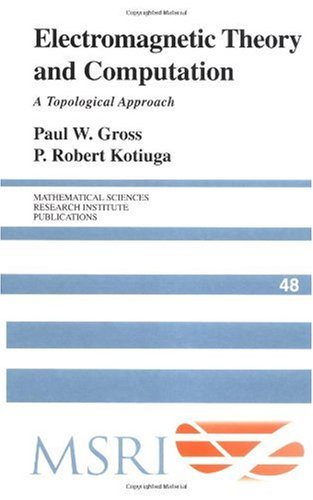
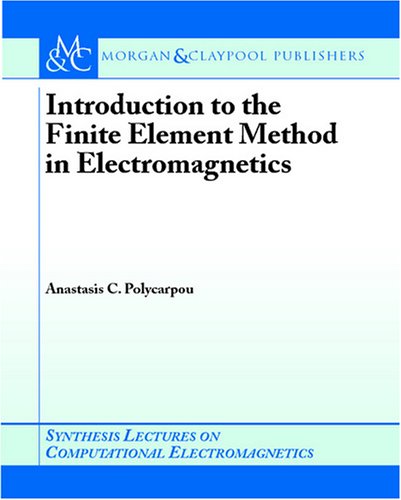
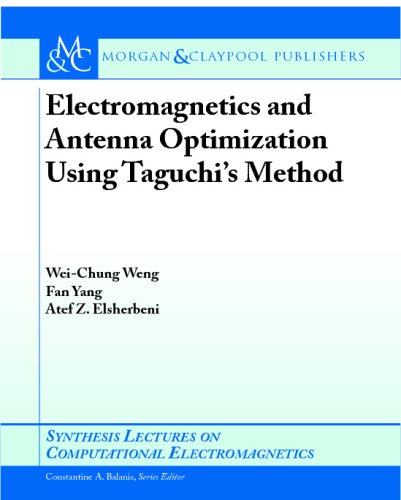
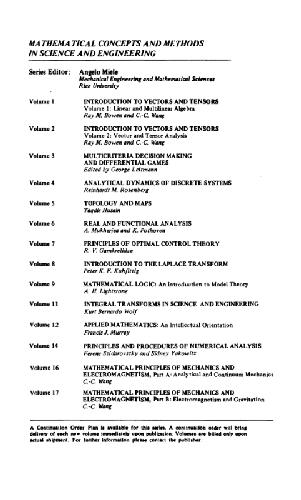
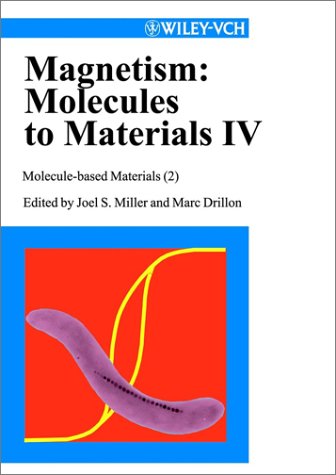
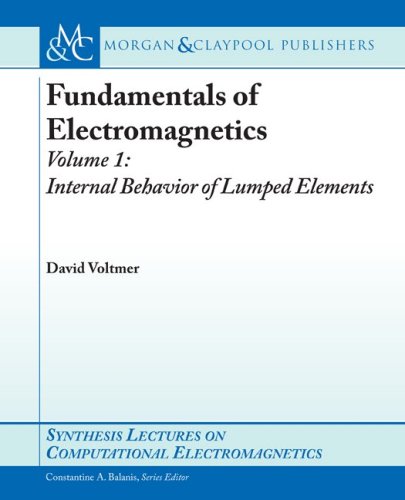
Reviews
There are no reviews yet.